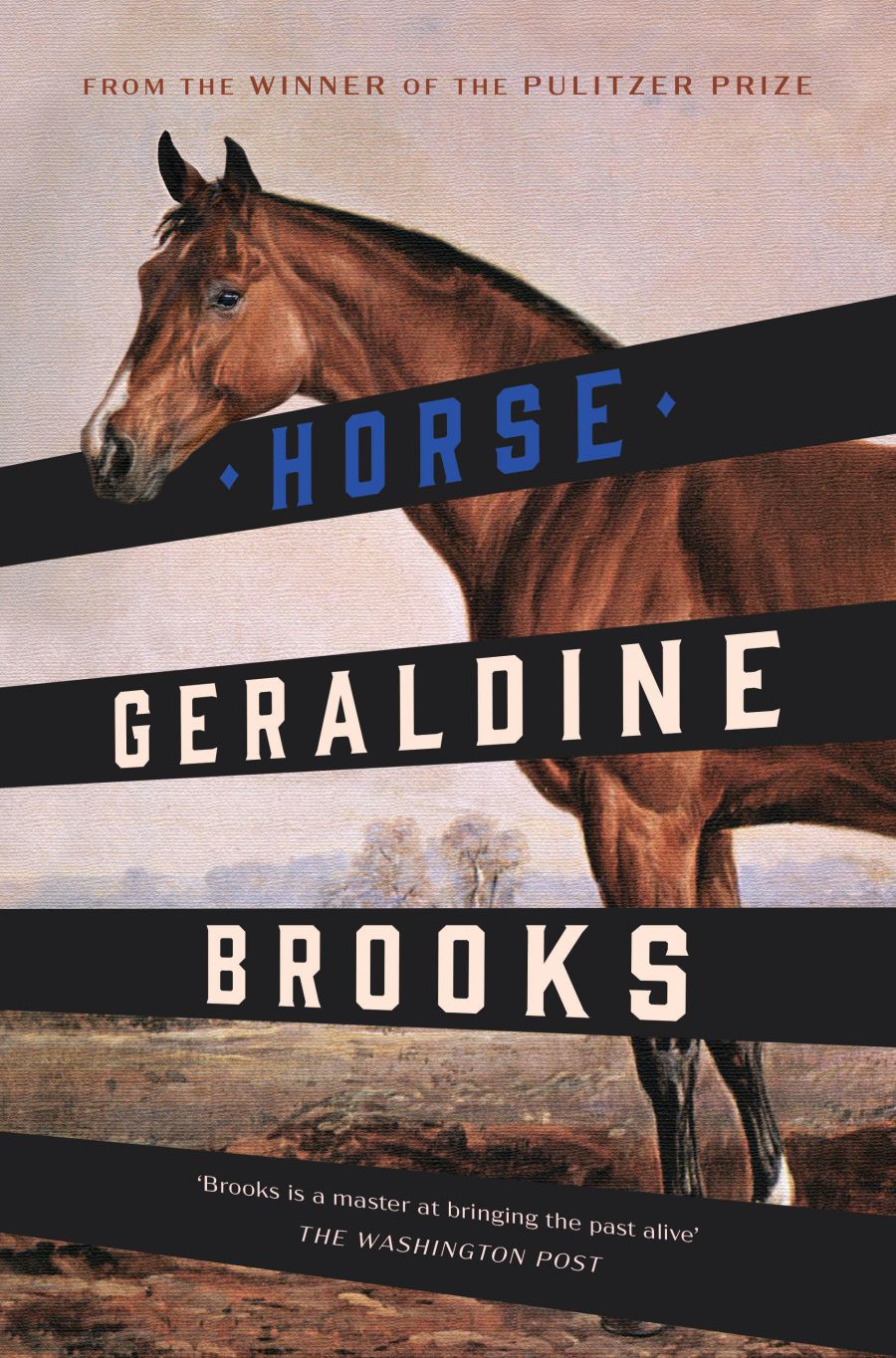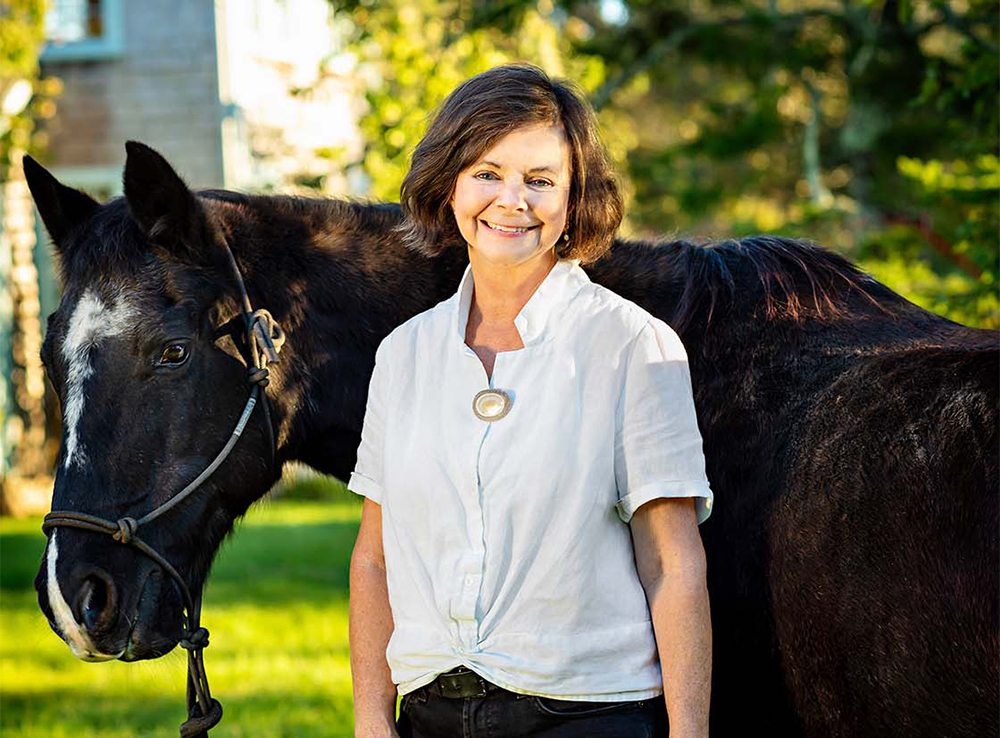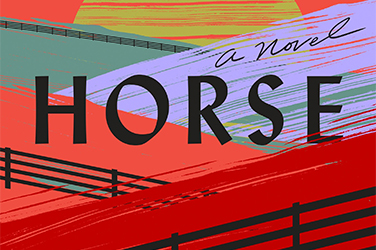
- Free Article: No
- Contents Category: Fiction
- Review Article: Yes
- Article Title: Horses for courses
- Article Subtitle: Geraldine Brooks’s highbrow detective story
- Online Only: No
- Custom Highlight Text:
Horse? Could that title sound familiar because it was a Richard Harris movie of the 1960s? Well, Geraldine Brooks, winner of the Pulitzer Prize for March (2005) and author of novels about everything from the characters in Little Women to the life of King David, is not one to be deterred by daunting precedents. She is a senior journalist who has gone on to use her capacity to master information and then spin it to spectacular effect in order to tell a story in which historical data and its artful arrangement yield an effect that is epical because of the way a many-voiced choir animates the chorales that underline the Passion that is dramatised.
- Article Hero Image (920px wide):

- Article Hero Image Caption: Geraldine Brooks (photograph by Randi Baird/PRH)
- Alt Tag (Article Hero Image): Geraldine Brooks (photograph by Randi Baird/PRH)
- Featured Image (400px * 250px):

- Alt Tag (Featured Image): Peter Craven reviews 'Horse' by Geraldine Brooks
- Book 1 Title: Horse
- Book 1 Biblio: Hachette, $39.99 hb, 401 pp
- Book 1 Readings Link: booktopia.kh4ffx.net/0J3V0L
And Brooks is as bright as a button. In her afterword she quotes Mark Twain: ‘Fiction is obliged to stick to possibilities: truth isn’t.’ Of course, that old Mississippian master of paradox knew as well as Aristotle that fiction was not obliged to stick to possibilities, but when it opted for the impossible it had better make it seem probable: just ask the author of A Midsummer Night’s Dream.
One of Brooks’s tricks in Horse is to bolster the ups and downs and credibility-stretching details of the story she tells with the most seductive and easeful form of narrative variegation: multiple points of view. She doesn’t actually use more than one narrator as Dickens does in Bleak House, or as his friend Wilkie Collins did virtuosically in The Moonstone, but she announces with her chapter headings who’s going to be dominating the action, what point in history we’re at, and which narrative is being continued.
It is a seductive and sustaining ploy, though the drawback with Brooks is that she’s not, by any stretch, a master of momentum. A lot happens in Horse, much of it riveting, but if Nabokov is right that Tolstoy understood the mystery of time in fiction then Brooks is very much the journalist laying everything on a bit thick, never quite getting the pace right in the face of the richness of her material.
That said, Brooks has a hell of a story on her hands. She has said how she was assigned to the sports desk as a rookie journalist and fell for the horses, how she heard a talk about a great racehorse of the antebellum period many years later, and how her knowledge of art history and her love of racehorses fused.
At the centre of Horse is a great racehorse. The time is the 1850s and Jarret, a young Black boy, is the one person who seems likely to be able to train the horse; he is in fact promised his freedom if he can do so. Meanwhile, just yesterday, in 2019, an Australian scientist at the Smithsonian, Jess, who is an articulator of bones is handed the horse’s weird and wonderful skeleton to work on. Jess is drawn into a relationship with Theo, a Nigerian-American art historian, who has every kind of connection – Australia, Oxford, polo playing – and is fascinated by the horse, which is represented in a notable nineteenth-century painting. This painting graced the collection, back in the 1950s, of Martha Jackson, a woman whose taste ran to modernism and the Abstract Expressionists in particular: she knew Jackson Pollock and may have been with him up to the time of his death.
There is a lot to bring together, and it’s not hard to feel the scintillation of the challenge Brooks has set herself. The great racehorse looks like the symbol of everything that brings the different Americas together, and there is real poignancy as well as sweeping glamour in the way the boy’s masterly skill with the great horse is treasured by the white Southerners – those who try to keep him and those who betray him. And the characterisation of the African American ‘tamer of horses’ (Hector’s title) is rather brilliantly achieved, because the gaps in the narrative allow him to mature and, to some extent, recede with some credibility.
The central relationship in the present between the Aussie scientist and the art historian is viable enough. She loves the way his dog is a kelpie and has the very Australian name of Clancy. There is a formidable confrontation between them when she derides that great critic John Berger and her boyfriend wipes the floor with her.
Are his experiences of racism at boarding school and playing polo a bit too neat, too schematic? They’re well within the realm of possibility but the simplicity of the response to them is a bit conventional and would not have passed the probability tests of Mark Twain or Aristotle.
That is, alas, also true of the way in which this section of Horse comes to embrace the Black Lives Matter issue. There is a power in what Brooks does with her narrative, but the plot development doesn’t have a symbolic relationship to the complex matters juxtaposed in the novel as a whole.
And that’s true, with bells on, of the 1950s art collector. Nor does the tallying of the racehorse’s bones illuminate the novel as a political work of art, even though it makes perfect sense of why the great horse stops racing.
Great novels have won the Pulitzer Prize, as have middlebrow ones. It may be part of the residual sanity of the prize that no masterpiece that simply soars alone like a steeple, no book that follows in the wake of Ulysses, as David Foster Wallace’s Infinite Jest did, could possibly win it.
The difficulty with Horse is that, while its intellectual and historical data are genuinely challenging and its technique is adeptly displayed, at the end of the day we’re looking at a rather conventional novel which is presented through the beguiling tesserae of its set of different narrative strands. This testifies to the book’s charm and the novelist’s intentions – as indeed to the politics that underlie her endeavour – but it doesn’t make Horse an achieved piece of writing. It is not the realisation of the forces that fed into the tragedy of the American Civil War, the horrors of slavery, and the tragic grandeur, symbolic and actual, of a great racehorse, except as these can be scattered intriguingly and entertainingly like so many clues and clusters of gold in a kind of highbrow detective story, if we must invoke that oxymoron.
‘Racehorse of genius’ was the paradox that made Ulrich’s head spin like a top in The Man Without Qualities. None of which is meant as a criticism of the friend of mine whose proudest moment was when he interviewed Black Caviar. But Horse is a diversion as often excited by its own seriousness with the lead up to the American Civil War as by its razzle-dazzle backdrop. For a deeper insight into this period, try Edmund Wilson’s Patriotic Gore, while for the truth of fiction, that impossible thing, there’s always the Mark Twain of Huckleberry Finn and Pudd’nhead Wilson.


Comments powered by CComment